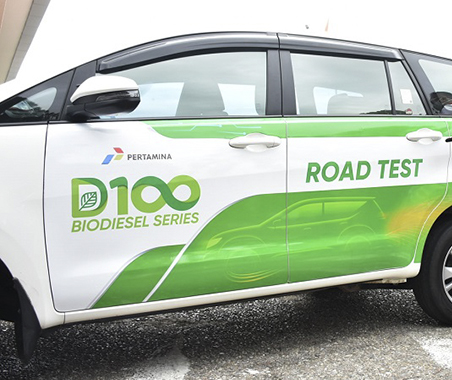Main Article Content
Abstract
Because of the significant demand for fuels in the transportation sector in Indonesia, as well as concerns about energy security and global warming, renewable, sustainable, and alternative energy sources such as biofuels are required to replace petroleum-based fuels. Promoting the production of green diesel from crude palm oil (CPO) using palm fatty acid distillate (PFAD) as its byproduct will make the overall process more efficient and environmentally friendly in Indonesia. As a result, CPO-based diesel production will be a green and high-value sector. By replacing fossil diesel with green diesel, a sustainable energy source can be assured without further depleting current fossil fuels, leading to cleaner and greener energy in the future and meeting the net-zero aim by 2060.
Keywords
Article Details

This work is licensed under a Creative Commons Attribution-NonCommercial 4.0 International License.
References
- I. C. Setiawan, “Quantitative analysis of automobile sector in Indonesian automotive roadmap for achieving national oil and CO2 emission reduction targets by 2030,” Energy Policy, vol. 150, p. 112135, 2021.
- A. E.-F. Abomohra, M. Elsayed, S. Esakkimuthu, M. El-Sheekh, and D. Hanelt, “Potential of fat, oil and grease (FOG) for biodiesel production: A critical review on the recent progress and future perspectives,” Progress in Energy and Combustion Science, vol. 81, p. 100868, 2020.
- A. Kolakoti, M. Setiyo, and B. Waluyo, “Biodiesel Production from Waste Cooking Oil: Characterization, Modeling and Optimization,” Mechanical Engineering for Society and Industry, vol. 1, no. 1, pp. 22–30, 2021, doi: 10.31603/mesi.5320.
- S. L. Douvartzides, N. D. Charisiou, K. N. Papageridis, and M. A. Goula, “Green diesel: Biomass feedstocks, production technologies, catalytic research, fuel properties and performance in compression ignition internal combustion engines,” Energies, vol. 12, no. 5, p. 809, 2019.
- S. K. Kim, J. Y. Han, H. Lee, T. Yum, Y. Kim, and J. Kim, “Production of renewable diesel via catalytic deoxygenation of natural triglycerides: Comprehensive understanding of reaction intermediates and hydrocarbons,” Applied energy, vol. 116, pp. 199–205, 2014.
- D. Yulia and A. Zulys, “Hydroprocessing of kemiri sunan oil (reutealis trisperma (blanco) airy shaw) over NiMoCe/γ-Al2O3 catalyst to produce green diesel,” in IOP Conference Series: Materials Science and Engineering, 2020, vol. 763, no. 1, p. 12038.
- M. F. Kamaruzaman, Y. H. Taufiq-Yap, and D. Derawi, “Green diesel production from palm fatty acid distillate over SBA-15-supported nickel, cobalt, and nickel/cobalt catalysts,” Biomass and Bioenergy, vol. 134, p. 105476, 2020.
- J. L. C. W. Pimenta, R. D. T. Barreto, O. A. A. dos Santos, and L. M. de Matos Jorge, “Effects of reaction parameters on the deoxygenation of soybean oil for the sustainable production of hydrocarbons,” Environmental Progress & Sustainable Energy, vol. 39, no. 5, p. e13450, 2020.
- M. Martín and I. E. Grossmann, “Process optimization of FT-diesel production from lignocellulosic switchgrass,” Industrial & Engineering Chemistry Research, vol. 50, no. 23, pp. 13485–13499, 2011.

